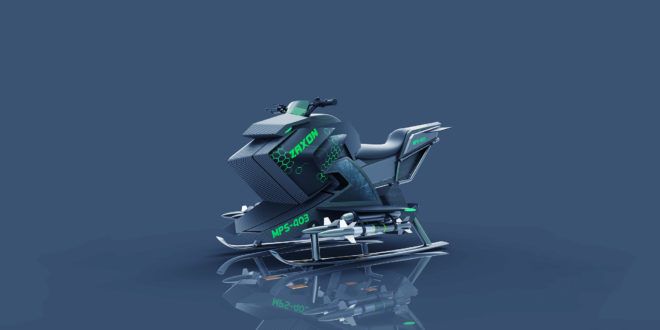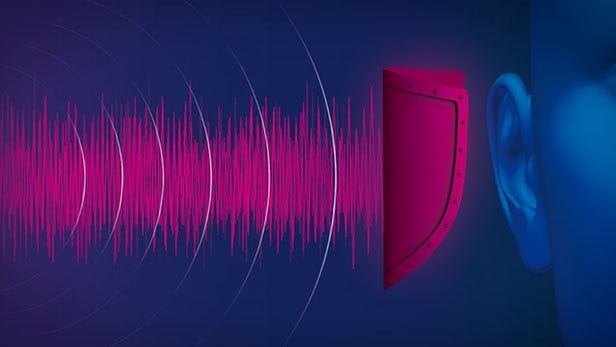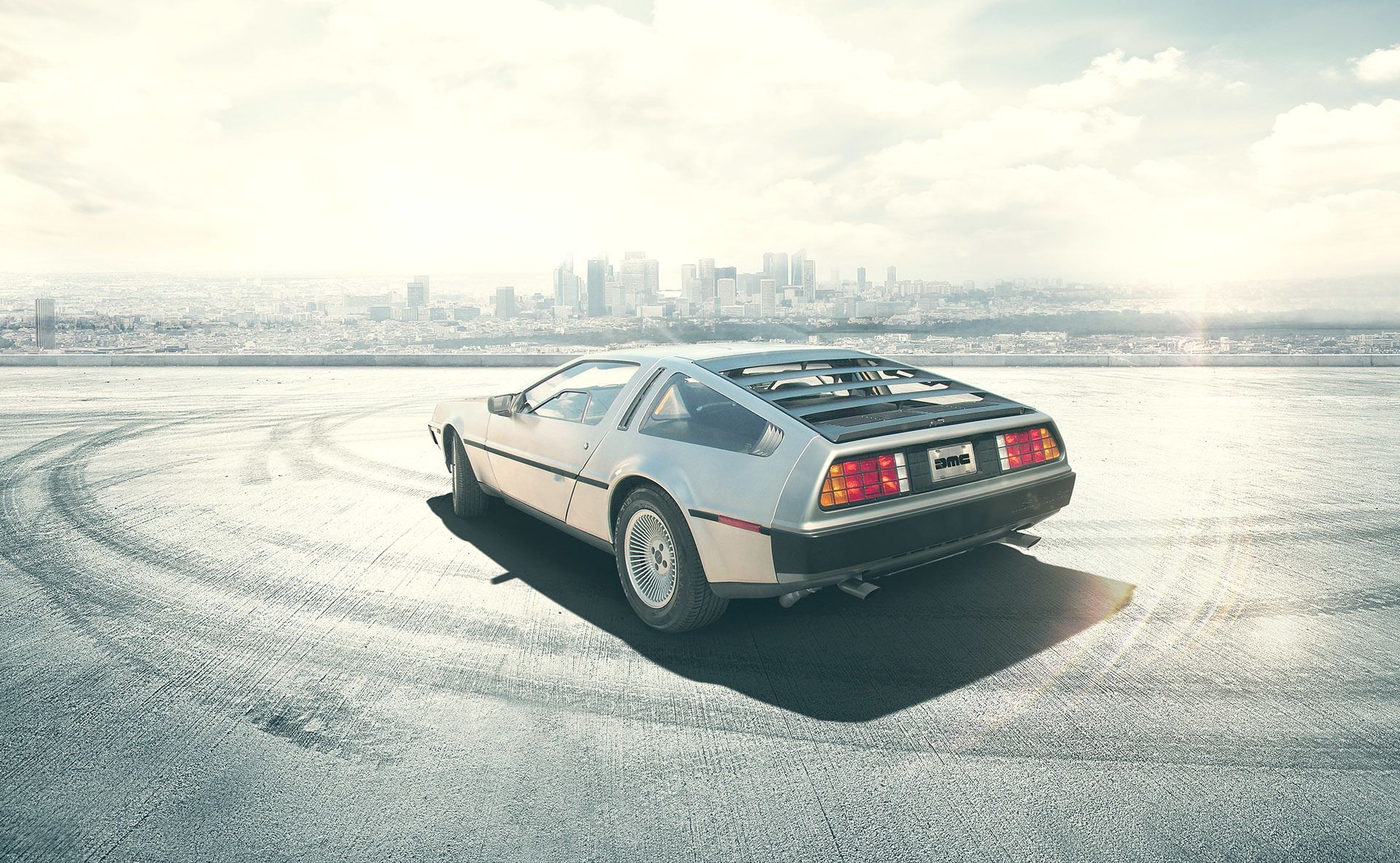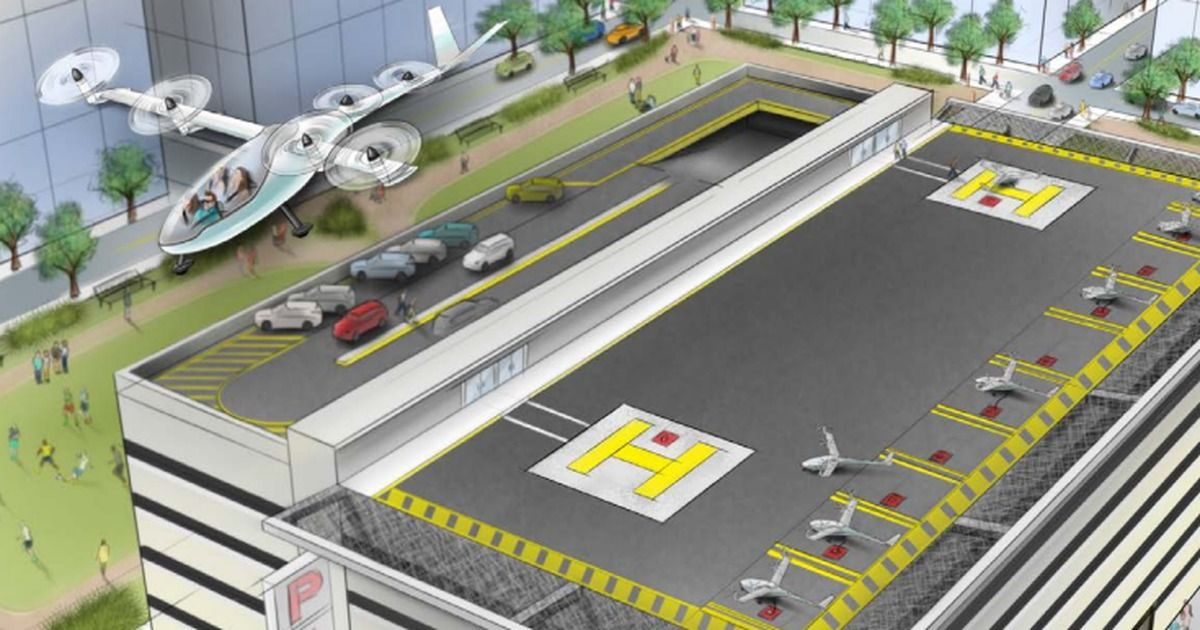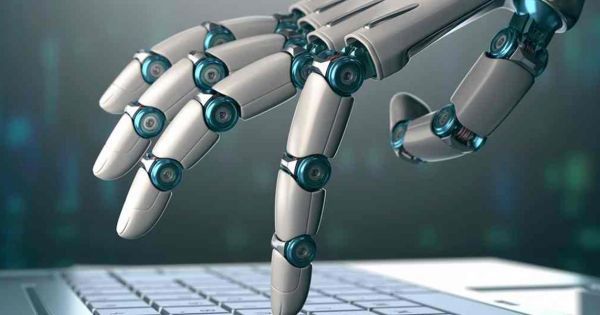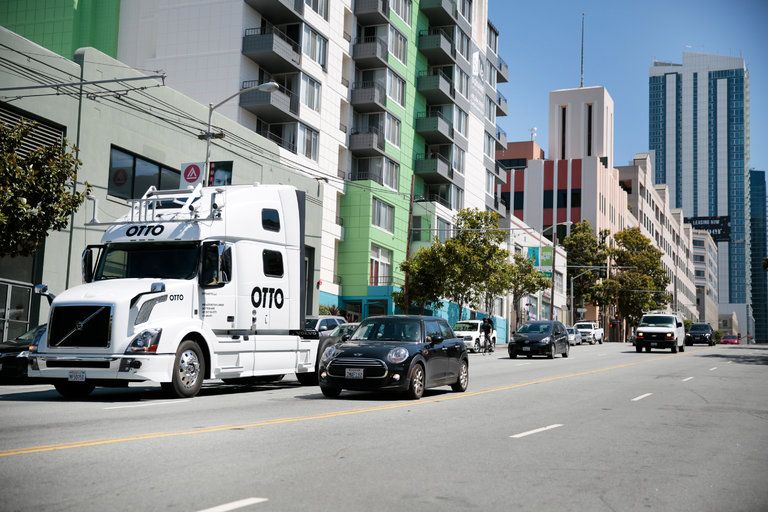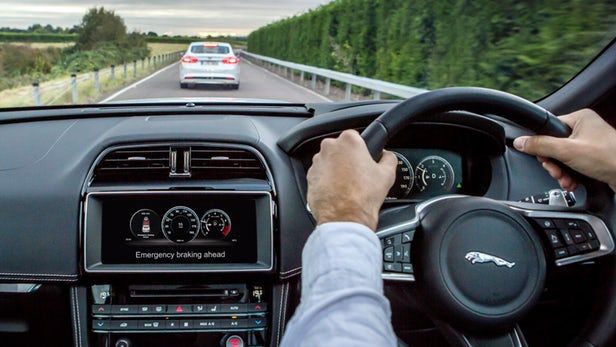So I thought up the Zaxon, a tactical vehicle that uses that turbojet technology to deploy special forces on the ground to a target less than 100 clicks away, possibly after dropping from a Lockheed Martin C-5 Galaxy.
The size of a standard touring motorcycle, the single-seat Zaxon would use two larger engines up front, and two smaller ones in back. The jets could tilt slightly for liftoff, landing, or full-speed flying. The large fuel tank would sit inside the bike, taking the space usually occupied by a motorcycle engine.
Two jet nozzles would help with lateral stability, making small adjustments when necessary. An onboard flying system would help stabilize the vehicle automatically, although the pilot would need to be trained to properly feel the bike and learn how to react to its movements.
